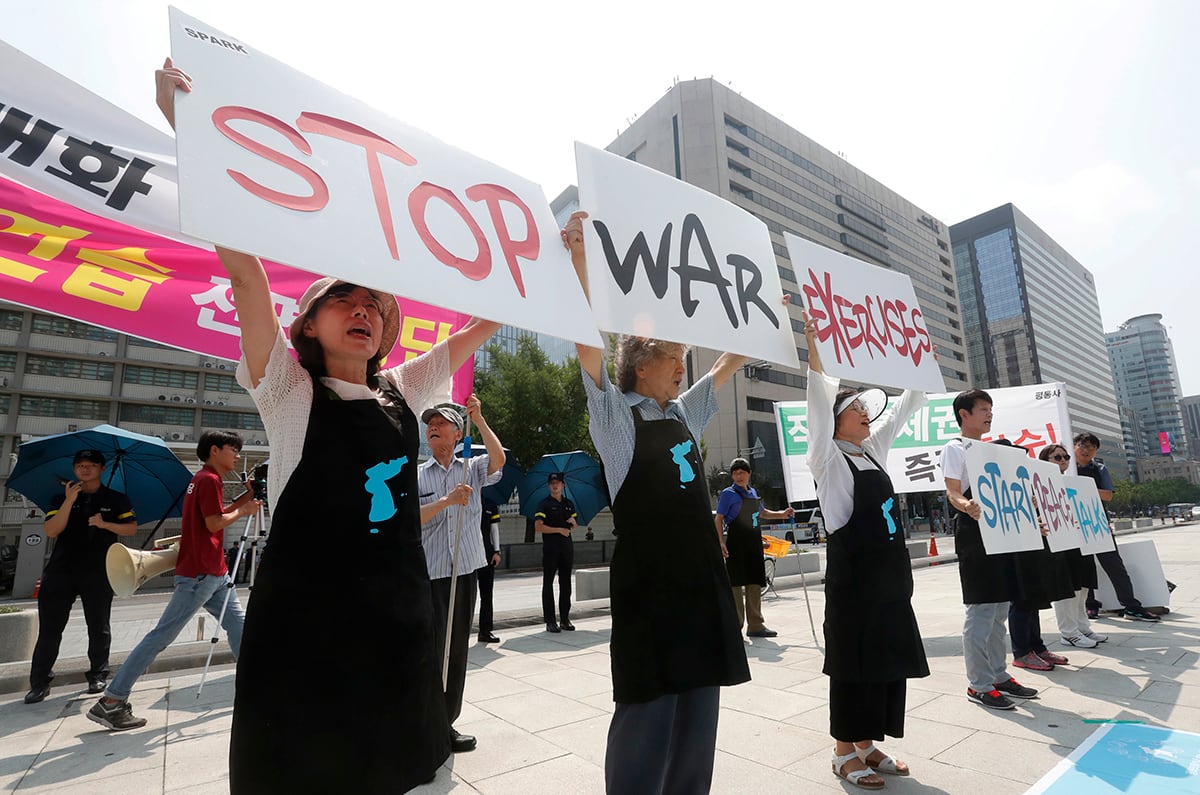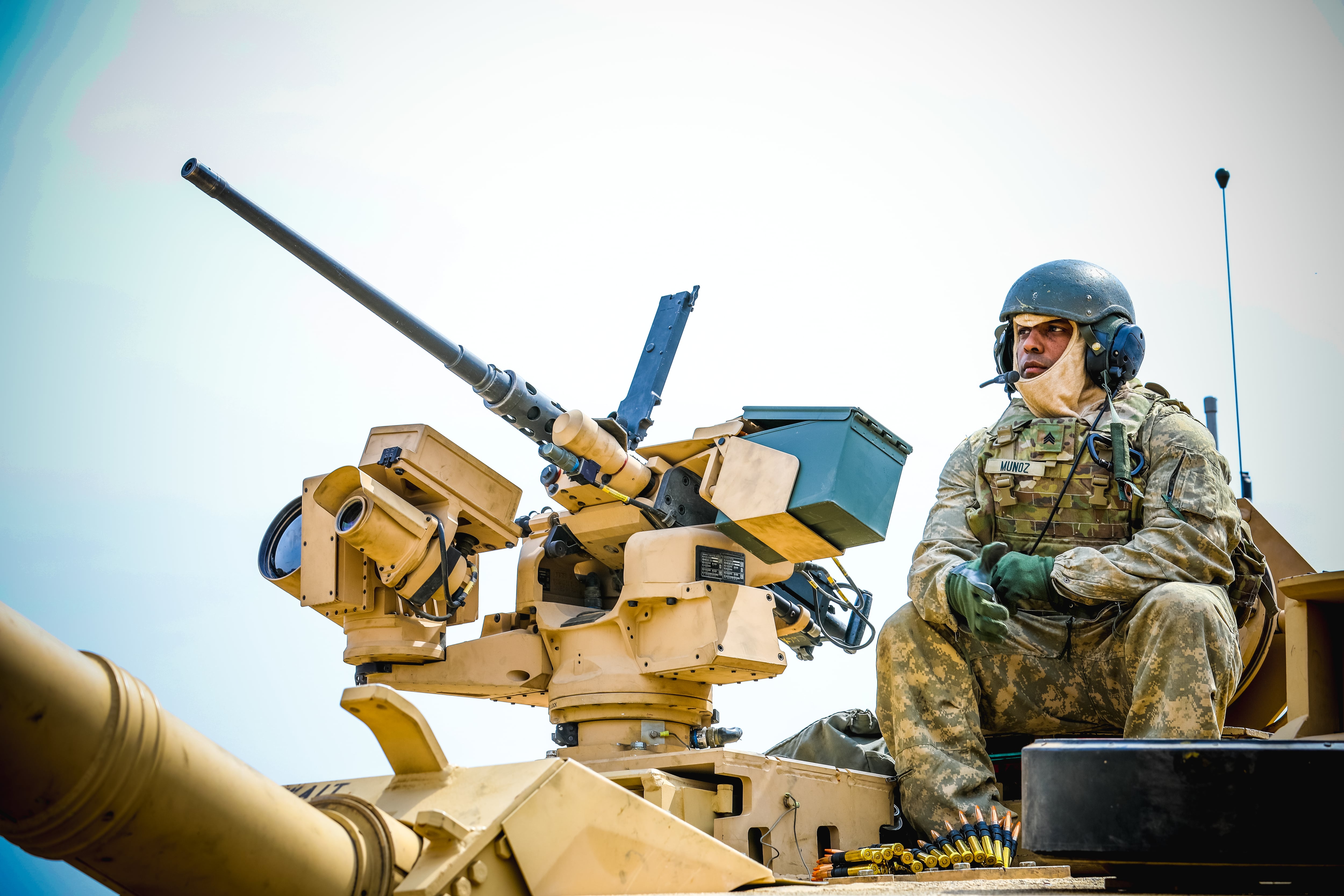SEOUL, South Korea — North Korea continued to ramp up its weapons demonstrations by firing two presumed short-range ballistic missiles into the sea Tuesday while lashing out at the United States and South Korea for continuing military exercises that the North says could derail fragile nuclear diplomacy.
North Korea’s fourth round of weapons launches in less than two weeks came amid a standstill in nuclear negotiations and after President Donald Trump repeatedly dismissed the significance of the country’s recent tests despite the threat the weapons pose to ally South Korea and U.S. bases there. Experts say the North’s weapons displays could intensify in the coming months if progress isn’t made on the nuclear talks.
South Korea’s military alerted reporters to the launches minutes before the North’s Foreign Ministry denounced Washington and Seoul over the start of their joint exercises on Monday. The ministry’s statement said the drills, which North Korea sees as an invasion rehearsal, leave the country “compelled to develop, test and deploy the powerful physical means essential for national defense.”
The statement from an unidentified spokesperson said Pyongyang remains committed to dialogue, but it could seek a “new road” if the allies don’t change their positions.
“It is too axiomatic that a constructive dialogue cannot be expected at a time when a simulated war practice targeted at the dialogue partner is being conducted,” said the statement released by Pyongyang’s official Korean Central News Agency. “We remain unchanged in our stand to resolve the issues through dialogue. But the dynamics of dialogue will be more invisible as long as the hostile military moves continue.”
Seoul’s Joint Chiefs of Staff said the two projectiles the North flew cross-country were likely short-range ballistic missiles. They were launched early Tuesday from an area near the North’s western coast and traveled about 450 kilometers (279 miles) on an apogee of 37 kilometers (23 miles) at a maximum speed of above Mach 6.9 before landing in waters off the country’s eastern coast, the JCS said.
The JCS said the projectiles showed similar flight characteristics to short-range missiles North Korea fired on July 25, which traveled about 600 kilometers (373 miles) during launches the North described a "solemn warning" to South Korea over its plans to continue military drills with the United States.
South Korea's military had said the flight data of the July missiles showed similarities to the Russian-made Iskander, a solid-fuel, nuclear capable missile that is highly maneuverable and travels on lower trajectories compared to conventional ballistic weapons, improving its chances of evading missile defense systems. The North last week also conducted two test firings of what it described as a new multiple rocket launcher system.
South Korea's government had no immediate statement on the North's launches. The office of South Korean President Moon Jae-in said his chief national security adviser, Chung Eui-yong, will hold an emergency meeting with the country's defense minister and spy chief on Tuesday to discuss the launches.
Japan's Defense Ministry said the launches did not pose an immediate threat to the country's security.

North Korea had said it will wait to see if the August exercises actually take place to decide on the fate of its diplomacy with the United States and whether to continue its unilateral suspension of nuclear and long-range missile tests, which leader Kim Jong Un announced last year amid a diplomatic outreach to Washington.
South Korea’s Defense Ministry on Monday didn’t initially confirm the start of the joint military exercises before Defense Minister Jeong Kyeong-doo told a parliamentary hearing that the drills had begun. Jeong did not provide specific details about the drills, which were expected to be computer simulated and not involve actual combat troops and equipment.
The North’s launches came a day after Moon, a dovish liberal, made a nationalistic call for economic cooperation between the Koreas while denouncing Japan’s imposition of trade curbs on the South amid an escalating diplomatic row.
Moon’s insistence that a “peace economy” by the Koreas would be able to erase Japan’s comparative economic superiority by “one burst” drew instant criticism from conservatives, who accused the president of ignoring the North’s weapons tests.
RELATED

The allies have scaled down their major military exercises since the first summit between Kim and President Donald Trump June 2018 in Singapore to create space for diplomacy. But the North insists even the downsized drills violate agreements between Kim and Trump.
Nuclear negotiations have stalemated since the collapse of the second Trump-Kim summit in Vietnam in February over disagreements in exchanging sanctions relief and disarmament.
The North’s recent tests have dampened the optimism that followed the third summit between Trump and Kim on June 30 at the inter-Korean border. The leaders agreed to resume working-level nuclear talks, but there have been no known meetings between the two sides since then.





